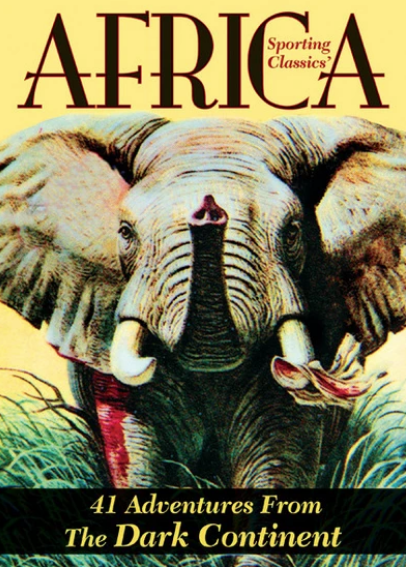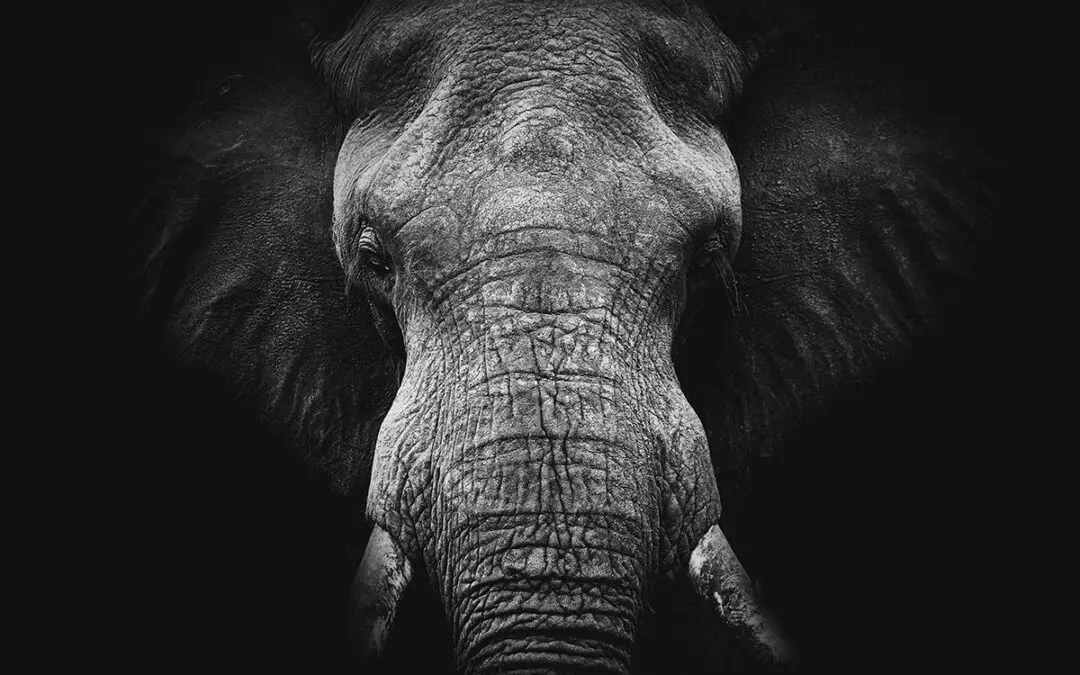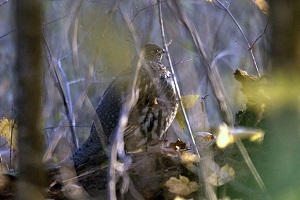There was a notorious rogue killer elephant whose ferocity was so extreme that he took complete possession of part of the country.
 He had killed eight or nine persons, and his whole object in existence appeared to be the waylaying and destruction of the natives. He was of enormous size, and was well known by a peculiar flesh-colored forehead.
He had killed eight or nine persons, and his whole object in existence appeared to be the waylaying and destruction of the natives. He was of enormous size, and was well known by a peculiar flesh-colored forehead.
In those days there were no firearms in this part of the country; therefore there was no protection for either life or property from this monster, who would invade the paddy fields at night and actually pull down the watchhouses, regardless of the blazing fires which were lighted on the hearth of sand on the summit; these he used to scatter about and extinguish. He had killed several natives in this manner, involving them in the common ruin with their watchhouses. The terror created by this elephant was so extreme that the natives deserted the neighborhood that he infested.
Many months passed away without his being either seen or heard of. The people began to hope that he had died from the effect of poisoned arrows, which had frequently been shot at him from the watchhouses in high trees. By degrees the terror of his name had lost its power, and he ceased to be thought of.
It was in the cool of the evening, about an hour before sunset, that about 20 of the women from the village were upon the grassy borders of the lake, engaged in sorting and tying into bundles the rushes that they had been gathering during the day for making mats. They were on the point of starting homeward with their loads when the sudden trumpet of an elephant was heard, and to their horror they saw the well-known rogue, with the unmistakable mark upon his forehead, coming down in full charge upon them. The ground was perfectly open; there were no trees for some hundred yards, except the jungle from which he was advancing at a frightful speed.
An indiscriminate flight of course took place, and a race of terror commenced. In a few seconds the monster was among them, and, seizing a young girl in his trunk, he held her high in the air and halted, as though uncertain how to dispose of his helpless victim. The girl, meanwhile, was vainly shrieking for assistance, and the petrified troop of women, having gained the shelter of some jungle, gazed panic-stricken upon the impending fate of their companion.
To their horror, the elephant slowly lowered her in his trunk till near the ground, when he gradually again raised her, and, bringing her head into his mouth, a report was heard like the crack of a whip — it was the sudden crushing of her skull. Tearing the head off by the neck, he devoured it and, placing his forefoot upon the body, tore the arms and legs from their sockets with his trunk, devouring every portion of her.
The women rushed to the village with the news of this unnatural carnage.
 Dolana and the neighborhood around it has always been famous for its elephant hunters, and the husband of this unfortunate girl was one of the most active in their pursuit. The news of this bloody deed flew from village to village; war was declared against the perpetrator, and preparations were accordingly made.
Dolana and the neighborhood around it has always been famous for its elephant hunters, and the husband of this unfortunate girl was one of the most active in their pursuit. The news of this bloody deed flew from village to village; war was declared against the perpetrator, and preparations were accordingly made.
A few days after this act, a hundred men assembled at Dolana, determined upon his destruction. They were all picked elephant hunters — Moormen, active and sinewy fellows, accustomed to danger from their childhood. Some were armed with axes, sharpened to the keenest edge, some with long spears and others with regular elephant ropes, formed of the thongs of raw deer hide, beautifully twisted. Each division of men had a separate duty allotted.
Since the murder of this girl, the rogue had taken up his abode in a small, isolated jungle surrounded by an open plain of fine, soft grass upon a level, sandy soil. Thither marched the hunters, but he anticipated their wishes and before they were within a hundred paces of his lair, he charged furiously out.
The conflict began in good earnest. The spearmen were in advance, and the axemen were divided into two parties, one on either flank, with an equal number of ropemen. The instant that he charged, the whole body of men ran forward at full speed to meet him; still he continued his furious onset, undismayed by the yells of a hundred men. The spearmen halted when within 20 yards, then turned and fled; this had been agreed upon beforehand. The elephant passed the two flanks of axemen in pursuit of the flying enemy; the axemen immediately closed in behind him, led by the husband of the murdered girl. By a well-directed blow upon the hind leg, full of revenge, this active fellow divided the sinew in the first joint above the foot.
That instant the elephant fell upon his knees, but he recovered himself directly and endeavored to turn upon his pursuers; a dozen axes flashed in the sunbeams as strokes were aimed at the other hind leg. It was the work of an instant: The massive limb bent powerless under him, and he fell in a sitting posture, utterly helpless but roaring with mad and impotent fury. The ropemen now threw nooses over his trunk and head; his struggles, although tremendous, were in vain; 50 men, hanging their weight upon several ropes attached to his trunk, rendered that dreaded weapon powerless. The sharp lances were repeatedly driven into his side, and several of the boldest hunters climbed up the steep ascent of his back.
An axe was seen to fall swiftly and repeatedly upon his spine, on the nape of his tough neck. The giant form suddenly sank; the spine was divided, and the avenging blow was dealt by the husband of his late victim. The destroyer was no more. The victory was gained without the loss of a man.
 The natives said that this elephant was mad; if so, it may account in some measure for the unheard-of occurrence of an elephant devouring flesh. Both elephants and buffalo attack man from malice alone, but without the slightest idea of making a meal of him. This portion of the headman’s story I cannot possibly believe, although he swears to it. The elephant may, perhaps, have cracked her head and torn his victim to pieces in the manner described, but the actual “eating” is incredible.
The natives said that this elephant was mad; if so, it may account in some measure for the unheard-of occurrence of an elephant devouring flesh. Both elephants and buffalo attack man from malice alone, but without the slightest idea of making a meal of him. This portion of the headman’s story I cannot possibly believe, although he swears to it. The elephant may, perhaps, have cracked her head and torn his victim to pieces in the manner described, but the actual “eating” is incredible.
 Sporting Classics has compiled this remarkable anthology showcasing the best African adventures published in our award-winning magazine.
Sporting Classics has compiled this remarkable anthology showcasing the best African adventures published in our award-winning magazine.
Ruark, Capstick, Roosevelt, Markham – the legends in outdoor literature are all here, sharing their stories of deadly encounters with dangerous game, of bizarre run-ins with witch doctors, gorillas and man-eaters, of safaris into the uncharted wilds of deepest Africa.
Illustrated by world-renowned artist Bob Kuhn, AFRICA features more than 400 pages of unforgettable stories by some of the finest professional hunters and writers of sporting adventure. Buy Now




